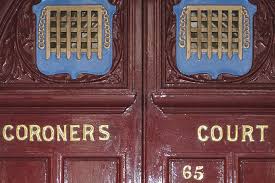Agency seeks supplier to facilitate online publication of information gathered through national survey as it nears 100-year cut-off
Details of the lives of the Londoners in this picture from the early 1920s could soon be published online Credit: Leonard Bentley/CC BY-SA 2.0
The National Archives is seeking a commercial partner to help it digitise data from the 1921 census of England and Wales.
The project will require the chosen supplier “to digitise, transcribe, and publish online” records from the decennial national census that was conducted 97 years ago. The archive, a non-ministerial government department housed within the remit of the Department of Digital, Culture, Media and Sport, is seeking a provider that can deliver digital image capture, and transcribe text data in a way that permits people to conduct “meaningful searches” of the records.
The census, which was the first to be conducted following the introduction of the Census Act of 1920. As such, the information it holds is typically considered to be subject to the non-statutory ‘100-year rule’, preventing publication for 100 years on grounds of confidentiality.
The records can be published from January 2022 at the earliest. The National Archives is looking for a supplier to begin digitisation work in May of this year and plans to award the chosen company a 10-year contract.
Related content
- The National Archives sets out two-year plan to ensure digital future
- National Archives on the hunt for £65k head of digital services
- The National Archives commits to apprenticeships as part of plan to ramp up digital headcount
Potential suppliers must demonstrate their credentials in three key areas, the first being “experience of managing and completing large-scale digitisation projects of heritage material”. The second is evidence of prior work delivering “online publication of heritage material specifically for use by the family-history market”.
In return for conducting for the digitisation project, the chosen supplier will be given rights to publish online images and transcribed text under the terms of a commercial licence to be granted by The National Archives. In which regard, the third requirement the agency is asking of a supplier for this project is evidence that the company has previously developed “viable commercial models that return an income stream to licensor partners”.
The licensor, in this case, will be The National Archives. The organisation has, for some time, run digitisation projects by allowing genealogy websites and other external entities to digitise its records – at their own expense. The digitised records, which suppliers are permitted to publish under licence, are then provided back to The National Archives, who retain the copyright, and can earn royalties for use of the records by other companies.
Speaking to PublicTechnology last year, The National Archives digital director John Sheridan said: “It creates a really sustainable model of digitising the records – and we are not spending any of our money on digitising the collection. We have a model that works particularly well for large-scale digitisation – we are doing that through our partners.”
Suppliers have until 8 February to bid for the project to digitise the 1921 census, with a contract scheduled to start on 31 May.



